SECO/VACUUM | When to Shift Gear for LPC
When to shift gear for LPC
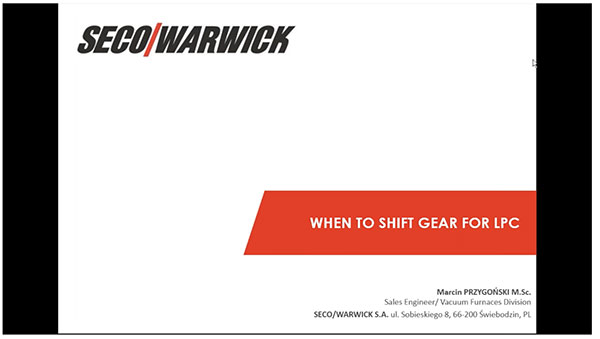
Morning, everyone. My name is Marcin Przygonski. I'm representing the Vacuum Furnaces Division at Seco Warwick. And it is a pleasure to speak to you and share the presentation about low pressure carburizing. And at the end of this presentation, I hope we will be able to answer the question, “When to shift the gear for low pressure carburizing?” So, I hope that you will find this presentation very beneficial. And let's start.
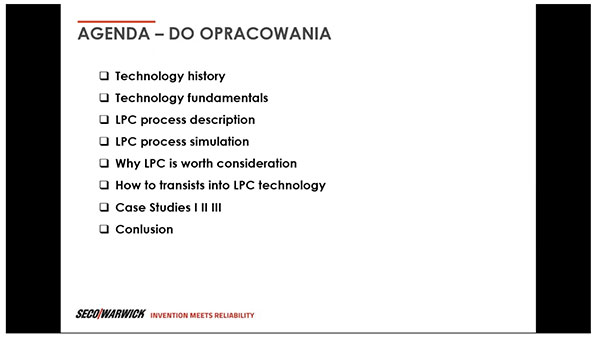
So basically, the agenda for this presentation is to speak about technology and the history, then technology fundamentals. Then, we'll speak about the low pressure carburizing process itself and a few words about low pressure carburizing process simulation. We will try to answer the question of why LPC is worth consideration and how to transition into LPC technology. I will share three case studies where our customers had the possibility to transition into LPC technology and finally, conclude this presentation.
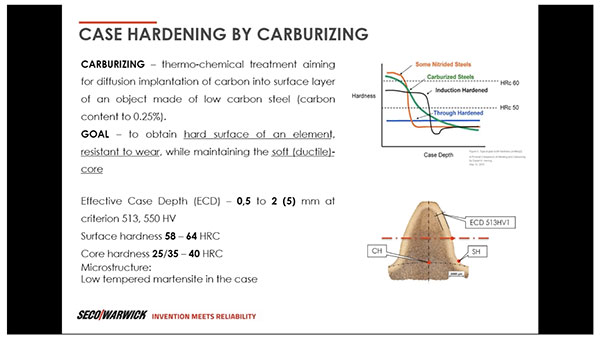
So, case hardening by carburizing is the topic for today's discussion. Just to have the same background for everybody, what is carburizing? We can call this a thermal chemical treatment aiming for diffusion implementation of carbon into the surface layer of an object made of low carbon steel. The goal is to obtain a hard surface on an element resistant to wear, while maintaining the soft core. Typical effective case depth is between one to two or even higher, or greater depth like five millimeters at different criterions – 513 or a 550 Vickers hardness. Typical surface hardness is in between 58 and 64 Rockwells; core hardness, depending on the steel, 25/35 up to even 40 HRC; and the microstructure is a low temperature model designed in the case.
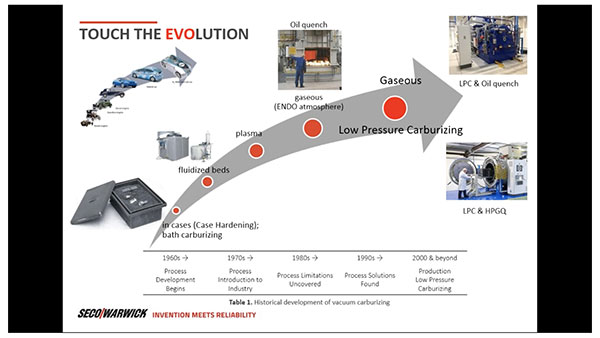
“Touch The Evolution” means that the technology – low pressure carburizing – and the carburizing itself, have been developed over the decades – starting with early case hardening, through fluidized beds and plasma, coming up to today’s technology which is called atmosphere carburizing and is based mainly on endo atmosphere. However, in a few decades, low pressure carburizing has become a brilliant alternative to that technology. And the history of development of this technology wasn't so clear. It started in the early 60s when the industry wanted to invent some alternative to the common technology. However, there were some limitations which prevented introduction of this technology for production within the industry. In the 90s, Process Solutions were found and since 2000 up to now, the low-pressure carburizing has been introduced into the production and it's a very fine alternative to the commonly known atmosphere-type carburizing.
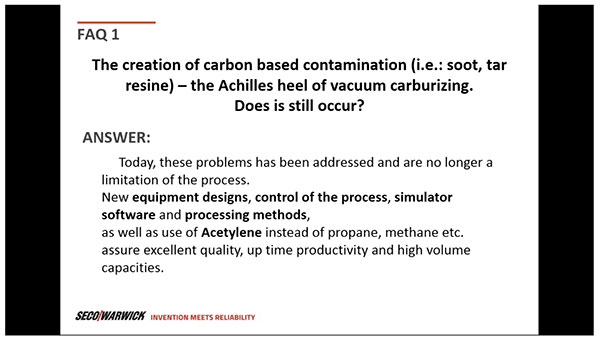
What was actually the cause of limitation was, in fact, the creation of carbon-based contamination like soot or tar or resin, which was the Achilles heel of vacuum carburizing. The present question would be, does it still occur? The answer is quite clear. As of today, this problem has been addressed and is no longer a limitation of the process. New equipment designs control the process. Simulator software is also very important, along with the processing methods used. Use of acetylene instead of propane or methane, assures excellent quality uptime, productivity and high volume capacities.
To continue and view the full audio/visual presentation in its entirety, register here: https://register.gotowebinar.com/recording/8974950976262457868
Also see our FineCarb Low-Pressure-Carburizing-Process Page




